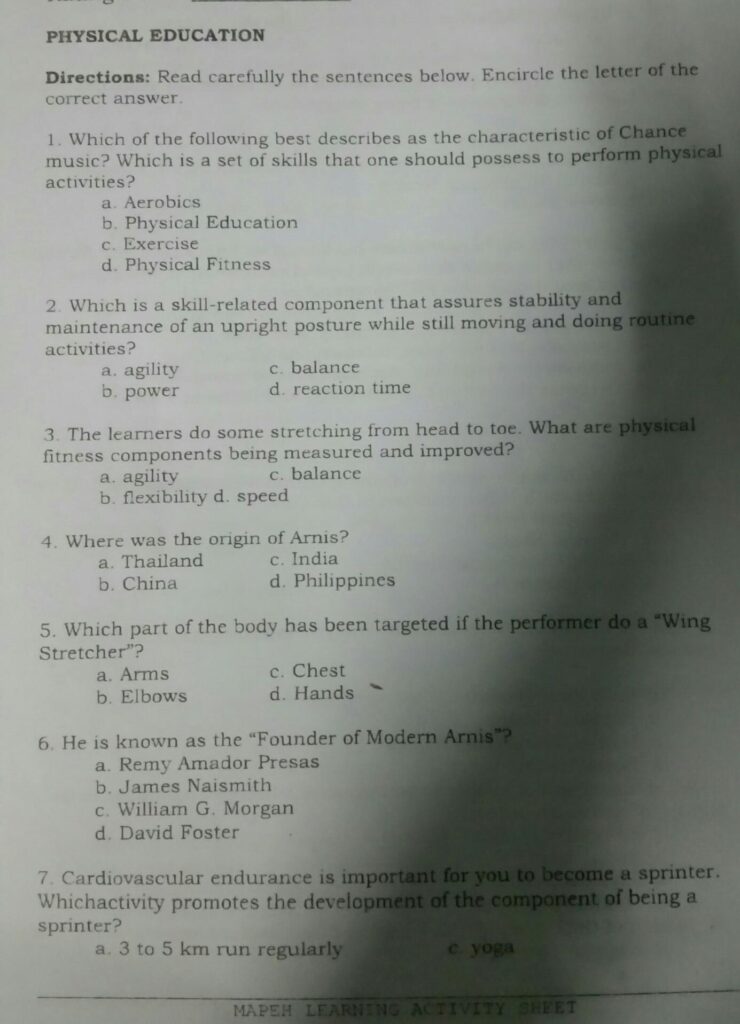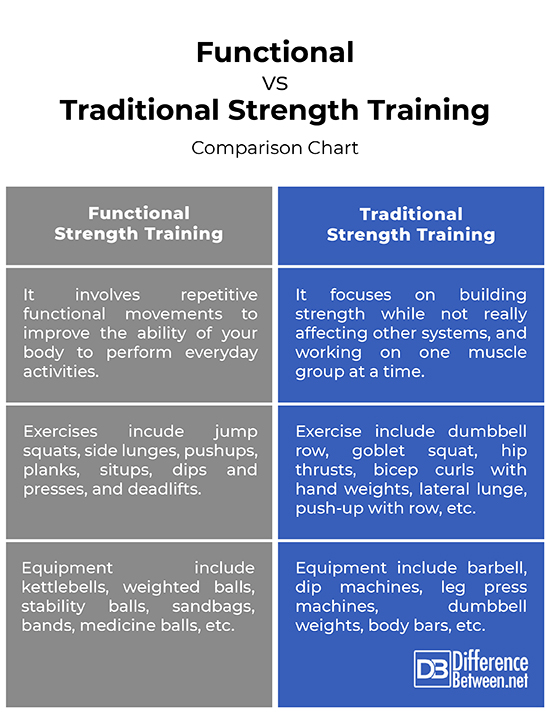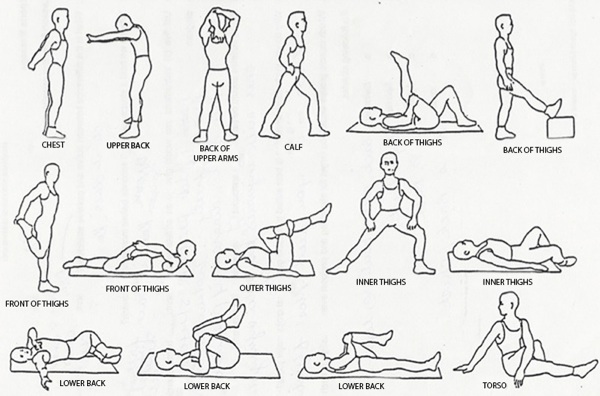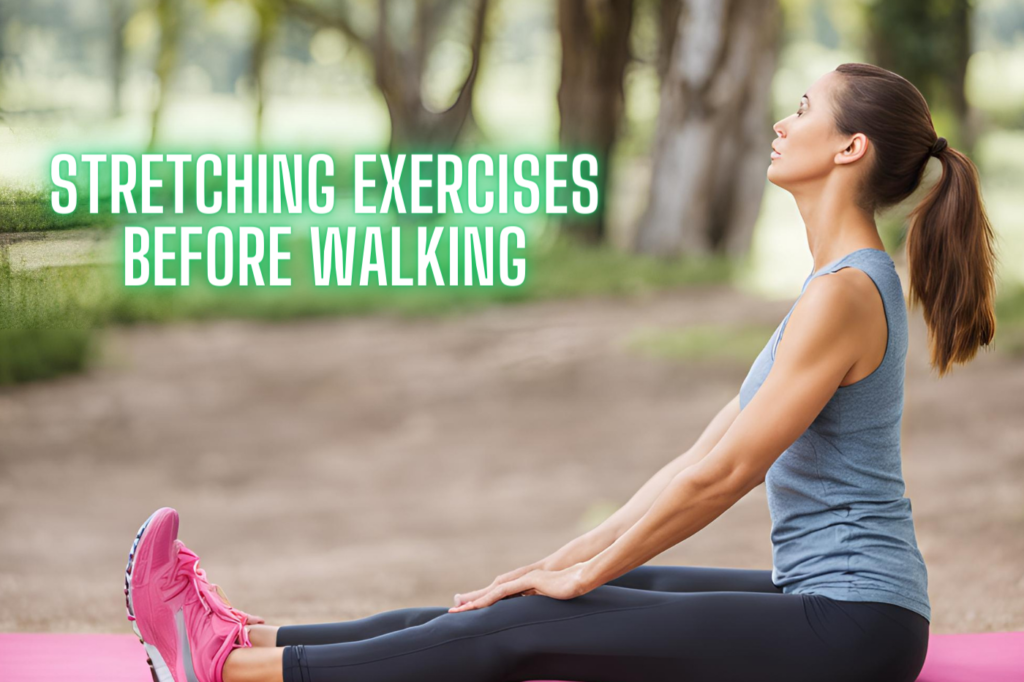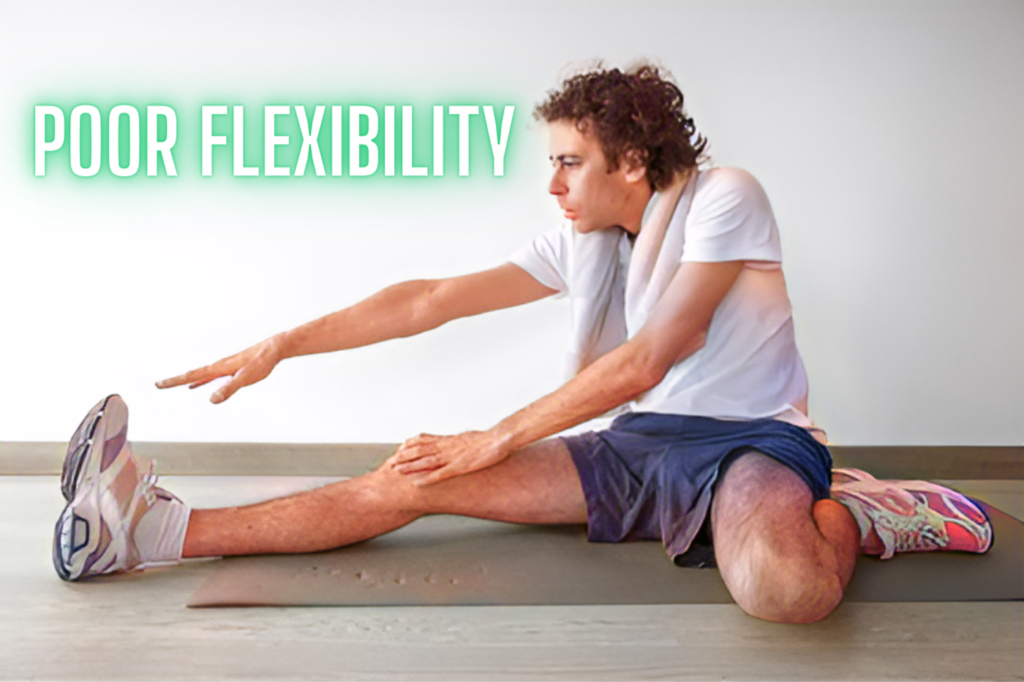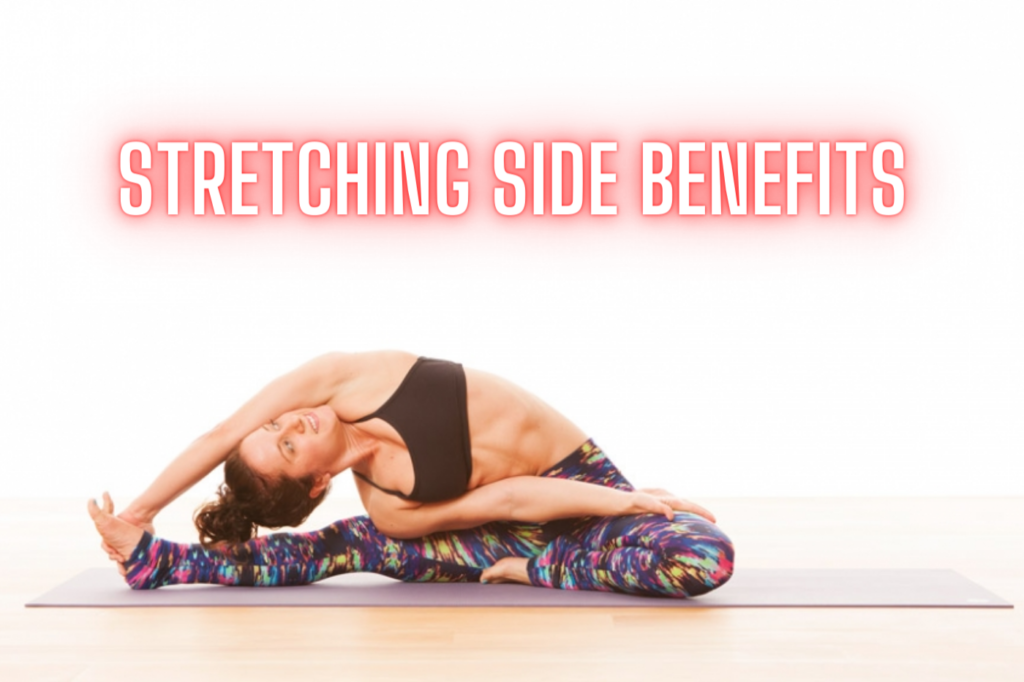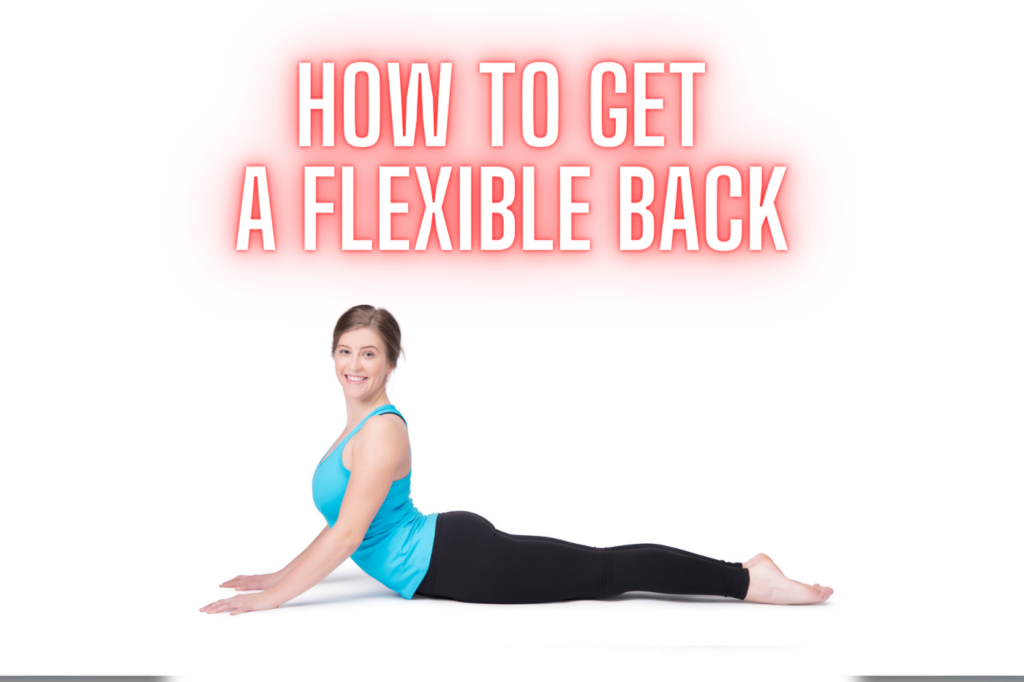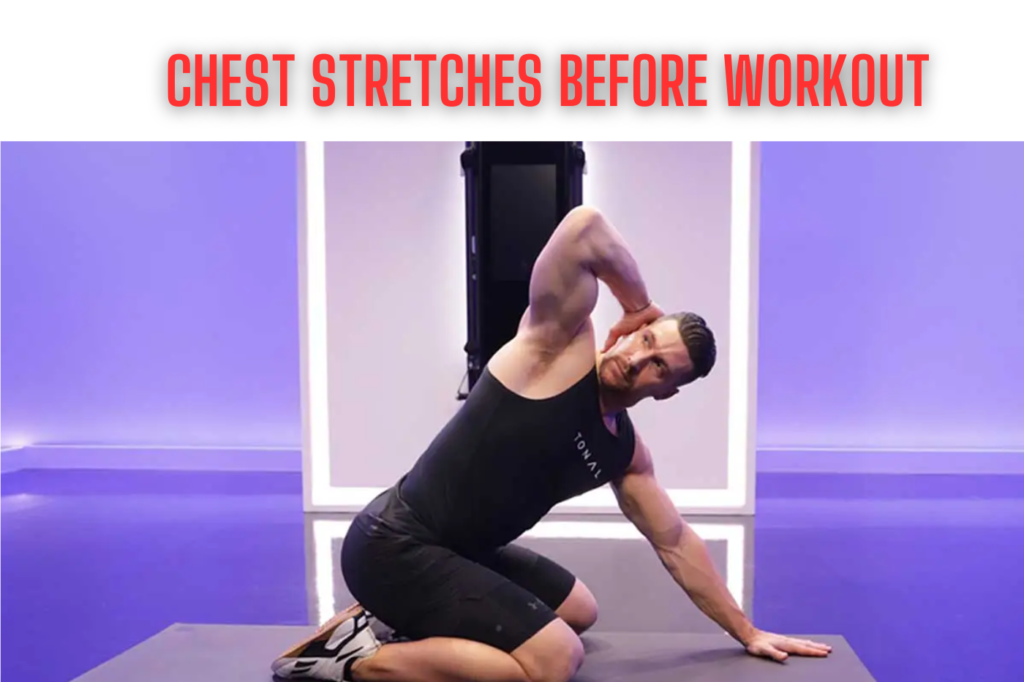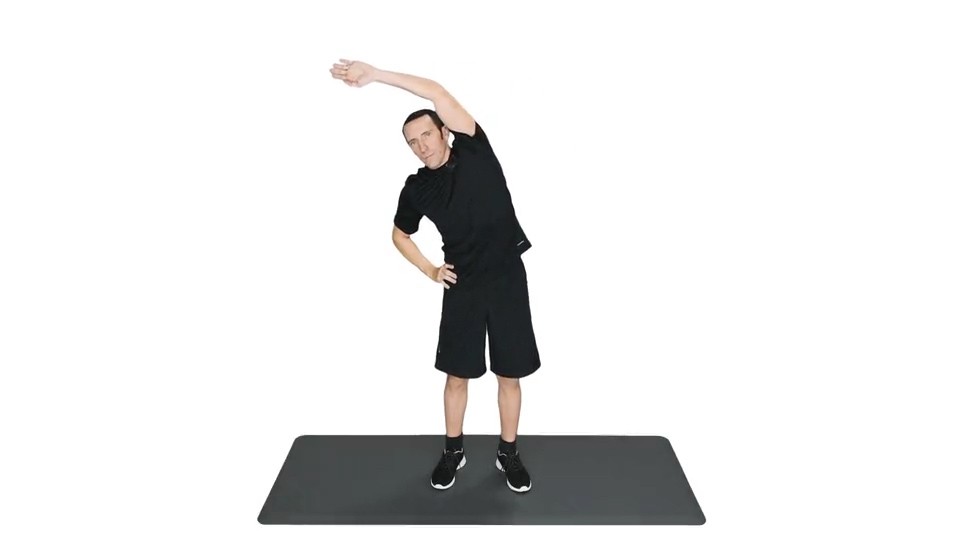Balanced stretching involves performing stretches equally on both sides of the body. It ensures muscles are stretched without causing imbalance or injury.
Balanced stretching is crucial for maintaining flexibility and preventing injuries. It involves stretching all muscle groups evenly, ensuring that no part of the body is neglected. This type of stretching helps improve posture, enhance athletic performance, and reduce muscle tension.
Incorporating balanced stretching into your routine can lead to better overall physical health. Stretching both sides equally ensures that muscles remain flexible and functional. It also helps in maintaining body symmetry, which is essential for proper movement and coordination. Regular balanced stretching can significantly improve your range of motion and reduce the risk of muscle strains.

Credit: www.everydayhealth.com
Introduction To Balanced Stretching
Balance in physical exercise means equal focus on strength and flexibility. This helps in preventing injuries. It also improves overall performance. Balanced stretching involves both dynamic and static stretches. Dynamic stretches involve movement, like arm circles. Static stretches involve holding a position, like touching your toes. Both types are important for a well-rounded routine.
Stretching is vital for keeping muscles flexible and strong. It helps you to move easily. Regular stretching can improve your posture. It also reduces muscle soreness after workouts. Proper stretching can enhance your athletic abilities. It is a simple yet powerful tool for overall fitness.
Key Principles Of Balanced Stretching
Balanced stretching focuses on symmetry. Both sides of the body should stretch equally. This helps avoid muscle imbalances. Proper alignment is also crucial. It ensures each stretch is effective. Good posture must be maintained during stretches. This prevents injury and improves flexibility.
A variety of stretches should be included in routines. This targets all muscle groups. Static stretches are good for flexibility. Dynamic stretches are better for warming up. A mix of both is ideal. This approach enhances overall muscle performance. It also prevents boredom and keeps the routine engaging.
Physical Benefits Of Balanced Stretching
Balanced stretching helps muscles become more flexible. This makes it easier to move. It can also help you perform better in sports and daily activities. Stretching regularly can improve the range of motion in your joints. This can help you avoid stiffness. Increased flexibility reduces the risk of injuries. It also makes your body feel better overall. Flexible muscles are less prone to strains and sprains.
Stretching before activities can prevent injuries. It prepares your muscles for exercise. Stretching improves blood flow to your muscles. This helps them work more efficiently. Balanced stretching also helps to balance muscle groups. This reduces the risk of muscle imbalances. Muscle imbalances can lead to injuries over time. Stretching can help keep your body aligned properly. This is important for overall health and well-being.
Mental And Emotional Advantages
Balanced stretching helps to reduce stress. It calms the mind and body. Deep breathing during stretching releases tension. This makes you feel more relaxed. Regular stretching can improve your mood. It can make you feel happier.
Stretching builds a strong mind-body connection. It makes you aware of your body. You learn to listen to your body’s needs. This awareness helps in avoiding injuries. You become more mindful in daily activities.
Incorporating Dynamic And Static Stretches
Dynamic stretching involves moving parts of your body. It helps to warm up muscles. This type of stretch improves range of motion. It is great before physical activities. Examples include leg swings and arm circles. These movements increase blood flow. They also help to reduce the risk of injury.
Static stretching involves holding a stretch for a period of time. It helps to lengthen muscles. This type of stretch improves flexibility. It is best done after exercises. Examples include touching your toes and holding the position. These stretches help to relax muscles. They also aid in recovery after workouts.
Creating A Balanced Stretching Routine
First, understand your body’s current flexibility. Note any areas that feel tight or sore. These areas need special attention. Consult a fitness expert if unsure. They can help identify specific needs. Consider any existing injuries or health conditions. This ensures you don’t worsen them.
Start with gentle stretches. Hold each stretch for about 15-30 seconds. Repeat each stretch two to three times. Focus on major muscle groups: legs, arms, back, and neck. Incorporate stretches that target problem areas. Balance your routine with dynamic and static stretches. Dynamic stretches involve movement. Static stretches are held without movement. Both types are important.
Common Mistakes To Avoid
Stretching too much can cause harm. Muscles can tear if overstretched. Always warm up before stretching. Cold muscles are more prone to injury. Listen to your body’s signals. Pain is a sign to stop.
Focusing only on a few muscles is a mistake. Balance your stretching routine. Stretch all major muscle groups equally. This prevents imbalances and injuries. Neglecting some muscles can lead to tightness and pain.
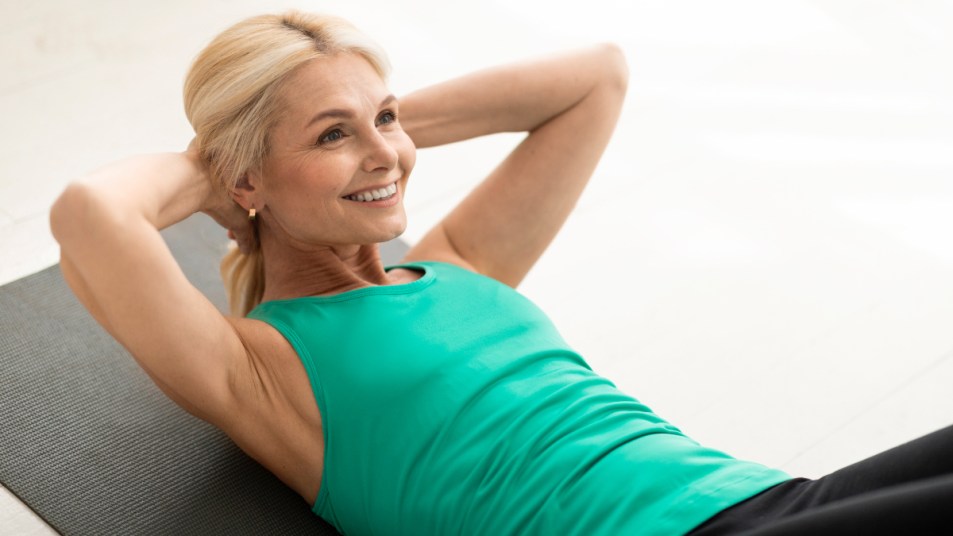
Credit: www.womansworld.com
Measuring Progress And Making Adjustments
Tracking flexibility is important. Measure your progress regularly. Use a simple ruler or tape measure. Record your stretch length. Write it down in a journal. Check your flexibility once a week. Celebrate small improvements. Stay consistent with your routine. This helps you stay motivated. Enjoy watching your progress grow.
Goals can change over time. Adjust your stretching routine as needed. Pay attention to your body. Listen to how it feels. Modify stretches to match new goals. Add new exercises if needed. Remove ones that no longer help. Keep your routine balanced and effective. Stay flexible with your approach. This keeps you moving forward.
Advanced Techniques In Balanced Stretching
Proprioceptive Neuromuscular Facilitation, or PNF, helps muscles become more flexible. This technique involves both stretching and contracting the muscle. A partner often assists to provide resistance. PNF can improve both flexibility and strength. Athletes use PNF to enhance their performance.
Active Isolated Stretching, or AIS, involves holding stretches for a short time. Each stretch lasts no more than two seconds. The technique helps to increase blood flow to muscles. AIS prevents muscle fatigue and injury. Many physical therapists recommend AIS for recovery.
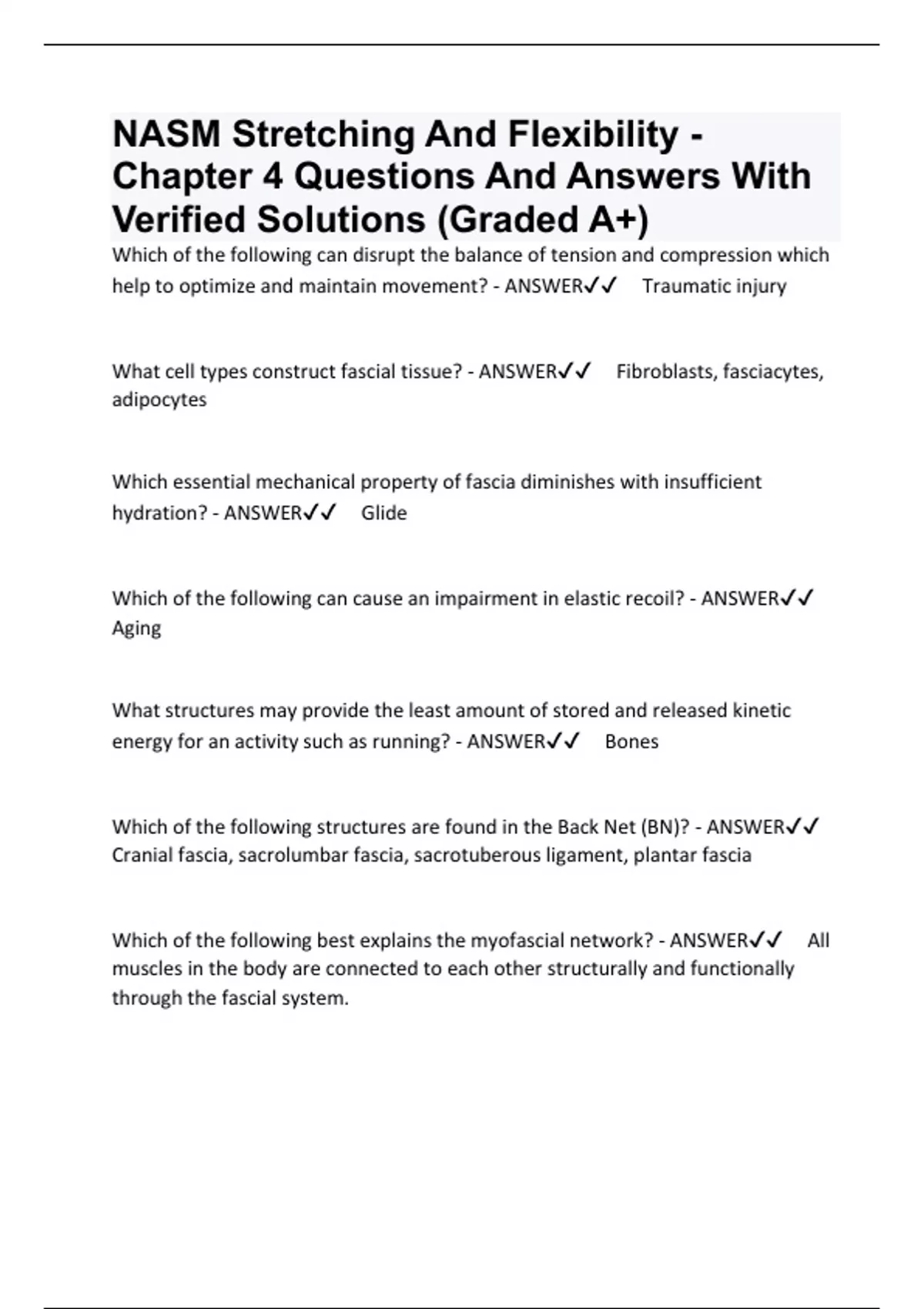
Credit: www.stuvia.com
Balanced Stretching Across Different Disciplines
Yoga and Pilates both focus on flexibility and strength. These disciplines use different poses and movements. Each pose targets specific muscles. This helps in improving balance and coordination. Breathing techniques play a key role too. They help in maintaining the poses longer. Regular practice can reduce stress and increase mental clarity.
Athletic training involves dynamic stretching and static stretching. Dynamic stretches are done before activities. They prepare the muscles for action. Static stretches are done after activities. They help in muscle recovery. Balanced stretching in athletic training prevents injuries. It also improves performance and flexibility.
Special Considerations For Various Populations
Children and teens have growing bodies. Their muscles and bones are developing. Stretching helps them stay flexible. It also prevents injuries. Dynamic stretches are good for them. These stretches involve movement. Examples are leg swings and arm circles. Static stretching is also important. It involves holding a stretch for 10-30 seconds. Always warm up first. This can be light jogging or jumping jacks.
Seniors need stretching to maintain mobility. It helps them stay independent. Gentle stretches are best. Examples include seated stretches and yoga. Always stretch slowly. Hold each stretch for 20-30 seconds. Breathing deeply helps relax muscles. Stretching can reduce pain. It also improves balance and posture. Always consult a doctor before starting. This ensures safety and effectiveness.
Technology And Tools To Enhance Stretching
Many apps help with stretching routines. Some apps offer guided sessions. Others provide customizable plans. These apps track your progress too. Online videos can show the correct techniques. Websites often have free resources for stretching. Joining online communities can be motivating. You can share your progress and get tips. Some apps have reminders. These help you stay consistent.
Using equipment can make stretching easier. Resistance bands add more challenge. They help in improving flexibility. Foam rollers are great for muscle relief. They reduce soreness after workouts. Stretching straps aid in deeper stretches. Yoga blocks support different poses. They are useful for beginners. Balance boards improve stability. They also help in strength training. Exercise balls can be fun. They provide support for different stretches.
Conclusion: Embracing Balance For Holistic Health
Stretching daily can improve your flexibility. It helps in reducing muscle stiffness. You will feel more relaxed and calm. Regular stretching can prevent injuries. It is easy to add stretching to your routine. Begin your day with a few stretches. Stretching before bed aids in better sleep. It is good for your overall health. Stretching can be fun and engaging. Your body will thank you for it. Stay consistent and enjoy the benefits.
Stretching improves blood flow and muscle health. It boosts your energy levels. You will notice less pain and soreness. Stretching helps in maintaining a good posture. It can also improve your performance in sports. Your range of motion will increase. This leads to greater overall mobility. Stretching is key to a healthier lifestyle. You will feel more agile and youthful. It contributes to a balanced and healthy life.
Frequently Asked Questions
What Describes Balanced Stretching?
Balanced stretching involves gently stretching all major muscle groups equally. It improves flexibility, reduces injury risk, and enhances overall performance. Always warm up before stretching and hold each stretch for 15-30 seconds. Avoid bouncing or forcing the stretch to prevent injury.
Consistency is key for effective results.
Which Of The Following Best Describes Balanced Stretching Quizlet?
Balanced stretching involves evenly stretching muscles to improve flexibility and prevent injury. It includes dynamic and static techniques.
Which Of The Following Best Describes Balanced Stretching Brainly?
Balanced stretching involves evenly stretching all muscle groups to enhance flexibility, improve performance, and prevent injuries.
What Does Balance And Stretching Do?
Balance and stretching improve flexibility, coordination, and muscle strength. They enhance physical performance and reduce injury risk. Regular practice promotes better posture and overall well-being.
Conclusion
Balanced stretching enhances flexibility, prevents injuries, and improves overall well-being. It’s essential for both athletes and fitness enthusiasts. Incorporate it into your routine for better performance and reduced muscle tension. Remember, consistency is key. Embrace balanced stretching to support your physical health and achieve your fitness goals effectively.

